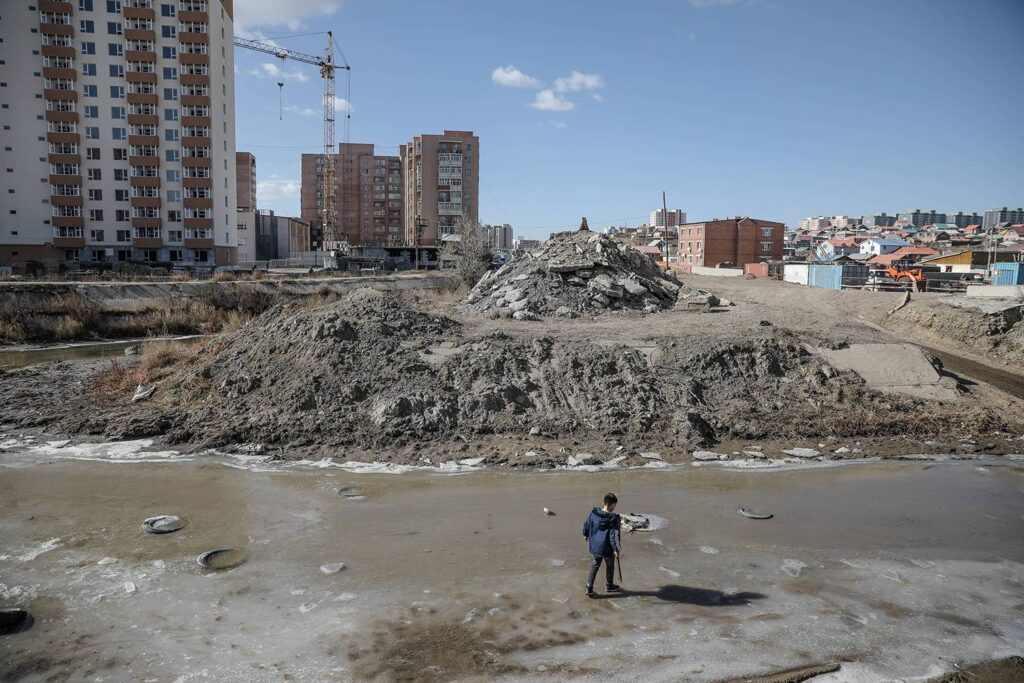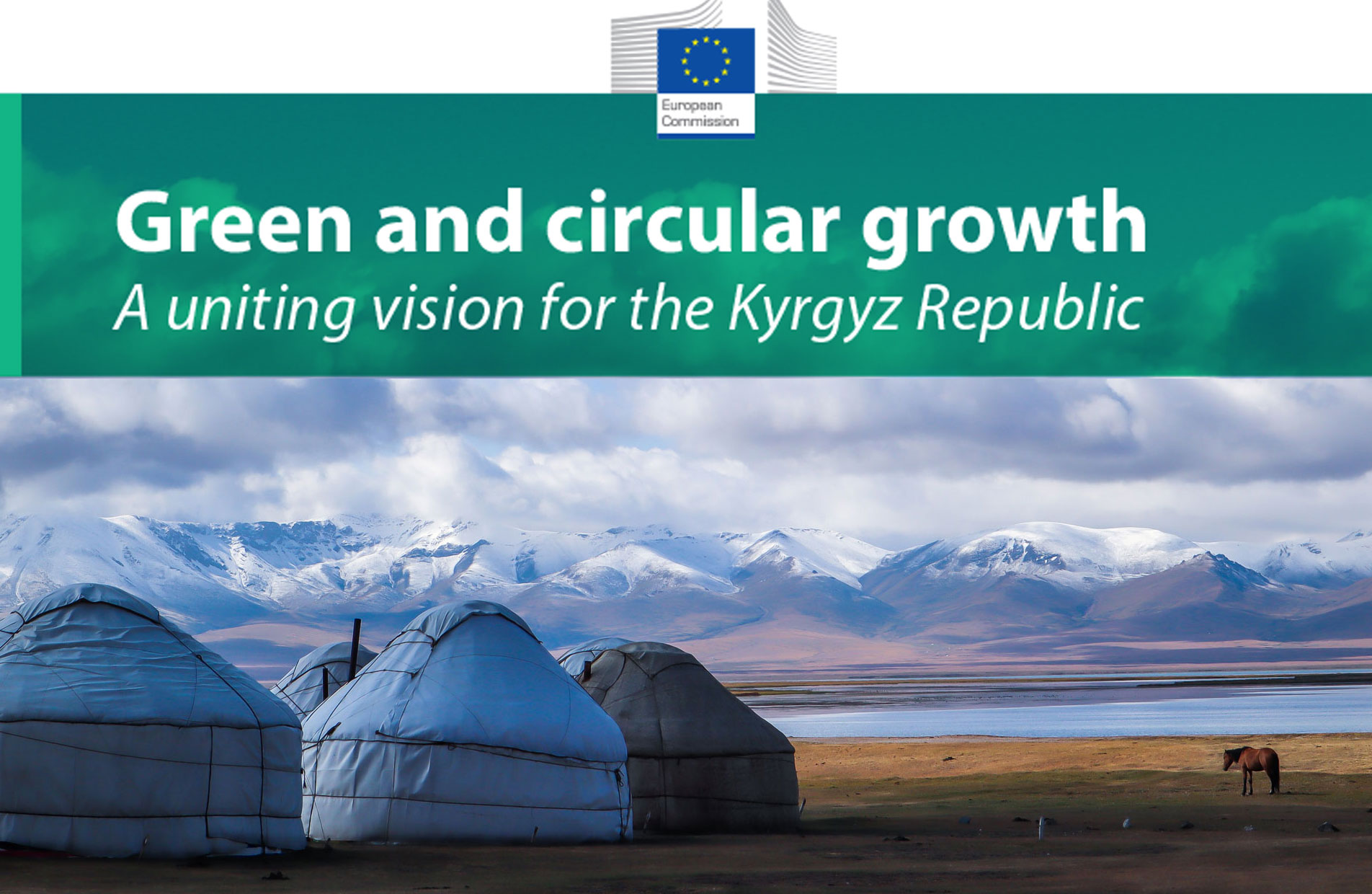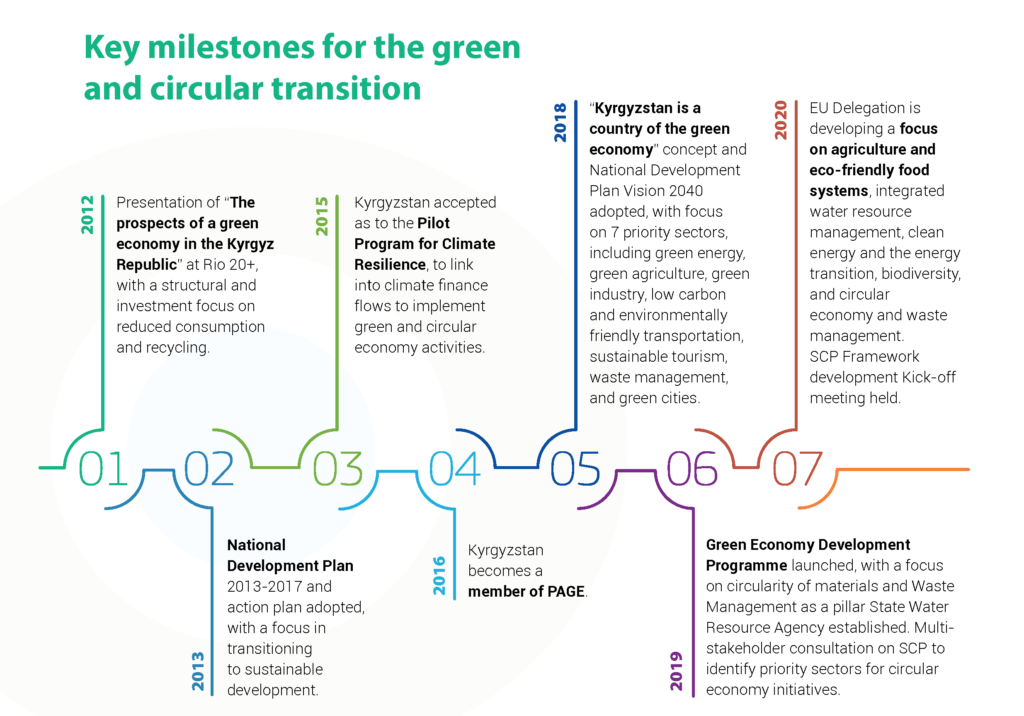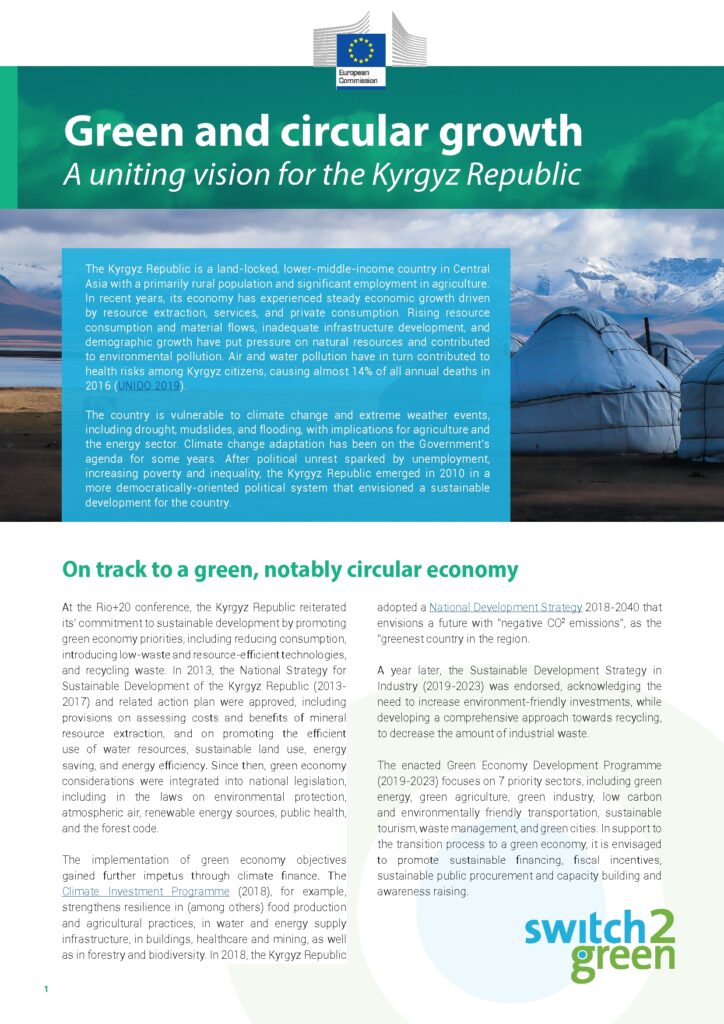On track to a green, notably circular economy: the Kyrgyz Republic
After political unrest sparked by unemployment,increasing poverty and inequality, the Kyrgyz Republic emerged in 2010 in a more democratically-oriented political system that envisioned a sustainable development for the country.
In 2013, the National Strategy for Sustainable Development of the Kyrgyz Republic (2013-2017) and related action plan were approved, including provisions on assessing costs and benefits of mineral resource extraction, and on promoting the efficient use of water resources, sustainable land use, energy saving, and energy efficiency. Since then, green economy considerations were integrated into national legislation, including in the laws on environmental protection, atmospheric air, renewable energy sources, public health, and the forest code.
The implementation of green economy objectives gained further impetus through climate finance. The Climate Investment Programme (2018), for example, strengthens resilience in (among others) food production and agricultural practices, in water and energy supply infrastructure, in buildings, healthcare and mining, as well as in forestry and biodiversity. In 2018, the Kyrgyz Republic adopted a National Development Strategy 2018-2040 that envisions a future with “negative CO2 emissions”, as the “greenest country in the region.
practices, in water and energy supply infrastructure, in buildings, healthcare and mining, as well as in forestry and biodiversity. In 2018, the Kyrgyz Republic adopted a National Development Strategy 2018-2040 that envisions a future with “negative CO2 emissions”, as the “greenest country in the region.
A year later, the Sustainable Development Strategy in Industry (2019-2023) was endorsed, acknowledging the need to increase environment-friendly investments, while developing a comprehensive approach towards recycling, to decrease the amount of industrial waste. The enacted Green Economy Development Programme (2019-2023) focuses on 7 priority sectors, including green energy, green agriculture, green industry, low carbon and environmentally friendly transportation, sustainable tourism, waste management, and green cities. In support to the transition process to a green economy, it is envisaged to promote sustainable financing, fiscal incentives, sustainable public procurement and capacity building and awareness raising. In 2020, a Coordination Council on Green Economy and Climate Change was formed to merge coordination on climate change and green economy, with the Climate Finance Centre as its Secretariat.
Drivers for the transition in the Kyrgyz Republic
Improving the quality of life across areas of the country, including those with high poverty levels and ethnic minorities, has been a priority – given the social unrest in 2010. A transition to a green and circular economy is seen as a vehicle for reducing inequalities.
Investing in human capital that enables a growing young population to understand, invest in, and manage more modern and greener technologies will create capacity for green and circular economy jobs. It expands opportunities for the fast growing young population, and at the same time promotes the transfer of low carbon technologies.
The pollution of water and air has significant impact on the health of many Kyrgyz citizens as well as on the economy. By addressing pollution, the Government aimed at protecting citizens and reducing economic losses
Preventing the loss of essential natural ecosystems drives policy making as
ecosystems connect generations, offer services to local societies and economies, and guarantee future economic growth, especially with regard to branding Kyrgyzstan as an eco-tourism destination and an organic agriculture country.
The Kyrgyz Republic’s topography allows for utilising significant
water resources for hydropower that can support both growth and Kyrgyzstan’s positioning within the region as a green economic power.
Addressing vulnerabilities in forestry, agriculture, water, and other sectors is an important trigger for the shift to a green and circular economy.

- Support to the discussion of a National Action Plan on Sustainable Consumption and Production via the SWITCH-Asia Programme
- Support to the private sector for example through the KyrSEFF+ project or the EU Central Asia Invest programme
- The EU (through the EUROPEAN BANK FOR RECONSTRUCTION AND DEVELOPMENT -EBRD) funds critical solid waste investments resulting in an improved level of solid waste services
- The EU (through EBRD) funds the Kyrgyzstan Climate Resilience Water Supply Project, and (through EIB) provides financial support to small and medium-sized enterprises in the agri-food sector.
- The EU-funded PAGE programme supported the elaboration of the country’s Green Economy Development Programme 2019-2023.
Lesson Learnt from the transition process
Coordination and integration have been important
at many levels - among EU cooperation sectors, among development partners, and in the approach to green economy topics. Co-operation among development partners has helped each partner to focus on those areas where they bring added value.
Green economy programmes
should also take into account other cross-cutting issues and priorities, such as digitalisation. Interlinkages can form new opportunities for partnerships.
Support from development partners
has helped establish appropriate structures within government institutions, and played an important role in supporting the development of capacities within institutions, including by adopting an integrated approach and contributing to the implementation of relevant sector strategies.
Events such as the Green Economy Week
showcasing the efforts of various projects and initiatives are helpful to align and coordinate across the sectors.
Partnerships between the EU and finance institutions
have leveraged both actors’ strengths to deliver results. Different types of instruments implemented by the EU complement infrastructure support funded by financial institutions like the EIB or EBRD.


